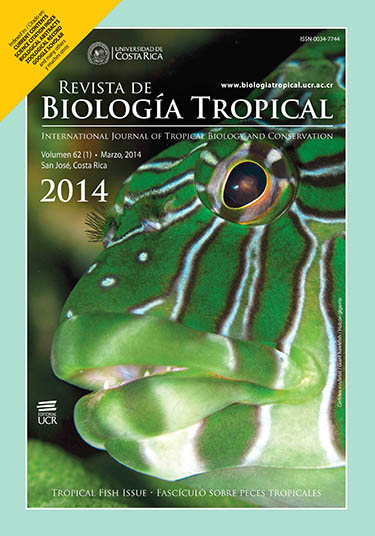Abstract
The Guayana Shield is one of the oldest territories in the planet and has millions of years subjected to leaching and erosion processes that produce oligotrophic soils. This scarcity of nutrients has not avoided the development of high, diverse and magnificent forests, where plants have adaptations to survive these difficult conditions. The aim of this work was to characterize the physical and chemical parameters of the soils in different forest communities of the Imataca Forest Reserve (IFR), to establish some interpretations on their origin, and some relationships between the edaphic components and the inhabitant species. Terrestrial journeys were carried out and two pathways were traced for the interpretation of forest communities. In each community, three plots (100m x 100m) for the ecological survey were established. In each plot, all trees, palms, and lianas were measured (dbh≥10cm; dbh: diameter at breast height); four 10m x 10m understory sub-plots were evaluated, and a census of all the spermatophyta species (dbh<10cm) was made. Soils were evaluated by means of a trial pit in each community, and a bore in each one understory sub-plot. The obtained data were analyzed by both a detrended and a canonical correspondence analysis. Results from a total of 15 plots allowed us to identify three communities: a forest dominated by Mora excelsa located in a narrow valley with high content of silt; a swamp forest dominated by Catostemma commune in a sandy broad valley, and a forest in clay hills dominated by Alexa imperatricis. Most of the soils had a pH between 3.1 and 4.5. Nutrients were in very low concentrations (N: 0-0.2%; P: 0-14ppm; K: 0-0.3Cmol/kg) and Al in toxicity quantities. We observed that Ca/Al relationship greater than 1 meant a neutralization of the toxic effect of Al. Besides, basal area ranged from 20.4 to 32.3m2/ha; the highest level (top local forest development) corresponded with the C. commune community with a Ca/Al value of 2.5. This research found an adequate relationship between soil and vegetation, as it was able to identify three communities into three distinct soil conditions. Nevertheless, edaphic constraints indicated that high forest cover must be maintained as an essential element for the conservation of these communities.##plugins.facebook.comentarios##
Downloads
Download data is not yet available.






